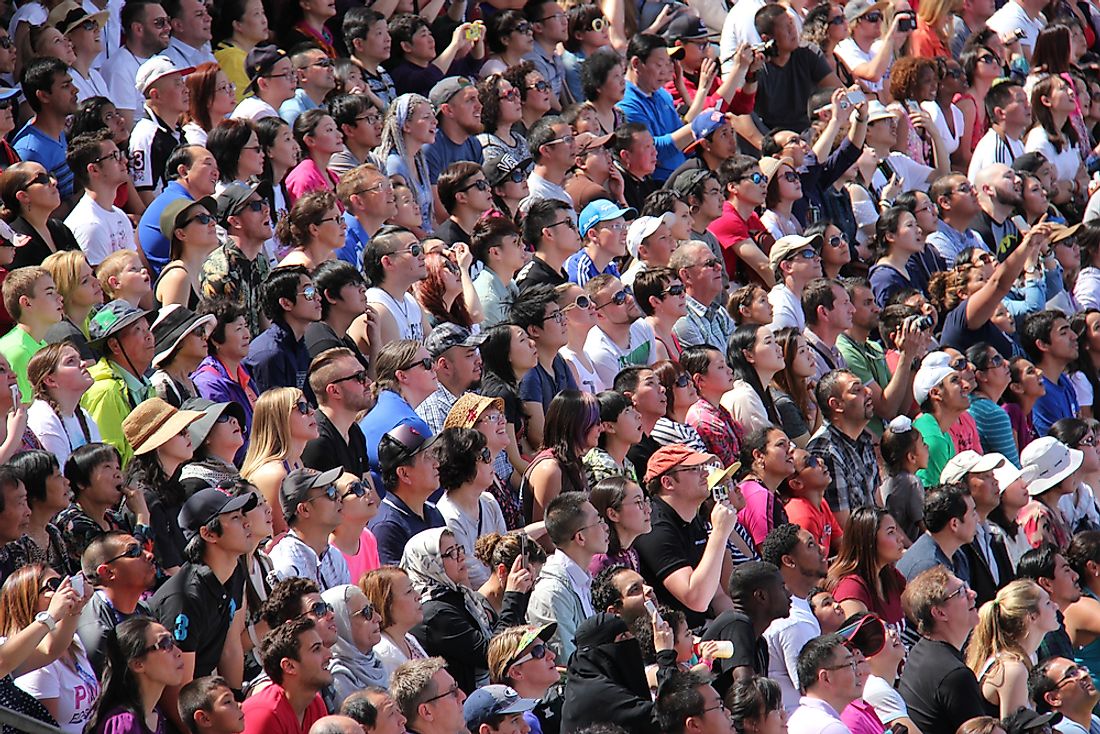Which Is The Most Ethnically Diverse US State?

California is not only the most populous state in the US, but it's also the most racially diverse, too. 72.9% of the 34 million people in California are white (including Hispanic and non-Hispanic), 14.7% are Asian, 6.5% are black, 1.7% are Native American, 0.5% are Pacific Islander and 3.8% of people are more than one ethnicity.
Racial Breakdown of California
White - 72.9%
It is estimated that the white population in California makes up about 72.9% of the total population, while the non-Hispanic white population constitutes about 38.0% of that number. The most commonly cited ancestry is Mexican at 25%, Germany at 9%, and Irish at 7.7%. Those with English ancestry constitute 7.4% and those with Italian ancestry made up about 5.8% of the total population. There are about 65 other Ethnic communities in the state of California which can be categorized as white.
The cities of San Francisco and Los Angeles have the highest numbers of the populations whose ancestry can be traced to England, France, Germany, Italy, Palestine, Russia, Iran, Ukraine, Romania, and other Scandinavian countries.
Asian - 14.7%
California has the second highest population of people citing Asian-American heritage, behind only Hawaii. According to 2010 figures, Asian-Americans in California account for around 14.7% of the population. Some of the largest sub-ethnic groups of Asian Americans in the state of California include Filipino-Americans, Chinese-Americans, Indian-Americans, and Vietnamese-Americans. The majority of the Asian-Americans in California are found in the metropolitan areas of Los Angeles and San Francisco. Other Asian-Americans in California include those with the ancestries including Japanese, Korean, Taiwanese, Cambodian, Laotian, Pakistani, Thai, Burmese, Indonesian, Sri Lankan, Bangladeshi, Nepalese, Malaysian, Mongolian, Singaporean, Okinawan, and Bhutanese among others.
Black - 6.5%
6.5% of the population of California is black. This amounts to around 2.3 million residents. Although the black population in California increased post World War Two, it has been declining in recent decades. While many of those with African-American heritage have lived in California for decades, there has also been a wave of immigration from Caribbean and African countries to California in recent years.
Native American - 1.7%
The Native American population refers to the indigenous people of California who occupied the region for several centuries. The earliest inhabitants of California were hunters and gatherers dating as far back to about 9000 BC. As a result of abundant food supplies, these early communities did not practice agriculture. Between around 3000 and 2000 BC, there was the development of some regional diversity as the local people started to fine-tune to the adaptations of the environments. Some characteristics recognized among these early communities were developed in about 500 BC. Groups like the Yuman or the Quechan occupied the present day southeastern part of Californian and parts of northwestern regions of Arizona, and they encountered the Spanish explorers for the first time between the 1760s and 1770s. The population estimate for this racial group before and after the European contact vary considerably, and estimates before the contacts were between the range of 133,000 and 705,000. Some scholars have disputed these figures estimating that they could have been much higher. However, after the contact with the Europeans, violence and diseases reduced and almost decimated the population of the indigenous people to fall as low as 25,000. During the period of the gold rush in California, the miners and other immigrants killed as many as 4,500 of the indigenous people of California between the years of 1849 and 1870. Today, the number of Native Americans in California sits at around 696,600 people.
Growth Trend Projections
The population of California has been growing tremendously, and in 1850 the population was 92,597. During the time of the gold rush in the mid-19th century, the population had increased by more than 300% to stand at 379,994. After the WWII in around 1950, the population in the state had reached 10,586,223 and continued to grow exponentially to reach 15,717,204 in 1960 while in 1978 it had reached 19,953,134. California has remained the biggest state for almost half a century by recording consistently high population growth rate each year, and it is estimated that population of California could reach 41 million by 2020, which would represent one out of every eight of the country’s citizens. It is projected that by 2050 the population will reach more than 50 million. The state of California registered 5,058,440 births between 2000 and 2009, and 2,179,958 deaths over the same period resulting in a positive growth of 3,090,016.











